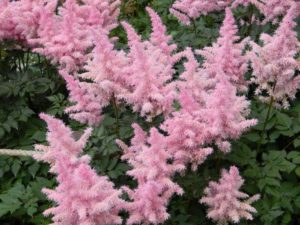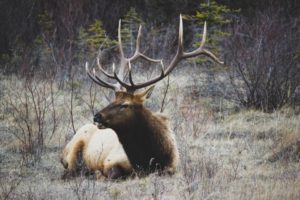2018
Updated 2/11/2025
Dealing With Deer: A Multi-Pronged Approach
Today’s garden projects include adding netting and tall stakes around the tomato plants that the deer have nibbled. There are lots of fruits on the ‘Big Beef’ tomato, and I don’t want to lose any of them as these animals tug on the vines.
Your perception that there are more and more deer roaming our neighborhoods is valid. Several accounts I’ve read over the years claim that there are far more white-tailed deer now than there were in colonial days.
The Costs Add Up
Damage to our landscapes, to farm produce, and to our vehicles is staggering. The Insurance Institute for Highway Safety reports that 1.3 million vehicular collisions with deer cause more than 150 human deaths and tens of thousands of injuries per year. Other sources claim there are 450 deaths per year caused by deer, and 2 million car collisions.
The damage amounts to over $4000 per vehicle. Add the suffering from Lyme disease and other diseases caused by infected deer ticks, and the toll climbs.
Deer are most active at dawn and dusk, so be especially vigilant then. Mating season occurs in the fall, and there’s only one thing on their minds at that time of the year. This is when accidents are more likely to happen, so, in the absence of oncoming traffic, use your high beams to warn the deer and to light up the edges of the road.
About a decade ago, I was driving slowly through known deer territory (Brookeville Rd. in Brookeville, Maryland) when one of them came flying off the bank and over the hood of my pick-up truck. I missed him by an inch. Or he missed me. Two other times, in Thurmont, Maryland, and in Charlotte, North Carolina, my truck did make contact, but there was no damage. They walked away apparently unharmed, but I’m not sure the deer didn’t suffer at least a little.
Keep Your Distance
Deer are powerful animals; do not attempt to approach them to scare them away or to “make friends”. They’re becoming bolder and more comfortable in our suburban neighborhoods, even in mid-day. Years ago, in my almost-enclosed back yard, I startled 2 large animals, who reacted by thundering randomly through the yard, looking for an exit. They were unseen, blending in with the background, and perfectly still, until suddenly…they weren’t.
I was able to back up and reach the kitchen door just in time. This incident was a vivid reminder that they can kill you!
Changing Diets
Don’t get me wrong. I love animals. But the damage to our landscapes and vegetable gardens is enormously frustrating! The time, effort, and money invested in our gardens are wasted if we can’t realize the benefits.
Numerous websites have lists of plants that describe those species severely, sometimes, or rarely damaged by deer. These are guidelines only. Deer that eat Astilbe, Asarum, and Brunnera in one part of the country might not touch it in another state—not yet. When they’re desperate for food, they’ll try almost anything.
Deer might be more likely to feed on plant species they evolved with, in other words, native species. When deer pressure builds (a large population in a limited area or during drought), they will sample the exotics, or imported species. If they don’t die or get sick, they’ve found another item they will teach their offspring is safe to keep on the menu.
In fact, some studies indicate that deer prefer imported flowers, trees and shrubs, which compose a greater percentage of our landscapes. Even though they had passed up the Asarum europaeum (European ginger) in the Rockville, Maryland, garden for 25 years, they decided in year 26 and afterward that it was perfectly yummy!
Suburban Deer
Deer are now accustomed to browsing in residential communities, where there’s an abundance of well-maintained plant material. We fertilize and water on a regular basis, making plants that much more tender and palatable to animals.
The formerly common native wildflowers have almost entirely been consumed by deer and are not regenerating. The rapid increase in deer populations—from lack of predators—is changing the character of both our native and cultivated landscapes.
Around 100 years ago, there were only 1 million deer in the United States. Widespread hunting depressed their populations so low that the government began regulating the number of deer that could be hunted. Now, there are roughly 30 million white-tailed deer in this country, living an average of 4-5 years in the wild.
Decades of Observation
After watching deer for many years, I can confidently assert that taking a “multi-pronged approach” is the most effective way to keep deer at a distance. Sure, one product will work pretty well for a short while. But the key to long-term success is to use several different repellents or barriers at a time. Mix it up a little!
Dozens of products can be found in garden centers, hardware stores, online, and at home and garden shows. There are sprays that smell like rotten eggs, mint, and rosemary. Others taste bad. You can buy capsules containing dried coyote urine, giving the impression that there are predators around. And then there are the barriers that prevent access to the plants.
Although it is often said that deer do not climb steps, a Maryland neighbor discovered that they do. After finding a large potted hibiscus on Julie’s deck, they regularly climbed the 5 or 6 steps to get to it.
Headings
Page 1: The Costs Add Up, Keep Your Distance, Changing Diets (Suburban Deer), Decades of Observation
Page 2: Deer Repellents (Sprays and Tablets, Repellex, More Spray Repellents, Devices, Granules, Barriers, Deer Netting, Gravel and Santolina, Got Milk?, Eggs, And A Few More)
Page 3: Plants That Deer Love (Hosta = Deer Bait, And Animals They Like), Plants Deer “Might Not Eat”, and What To Do



